247 scholarly books by University Press of New England and 31
have author last names that start with M
247 scholarly books by University Press of New England and 31
247 scholarly books by University Press of New England
31 have author last names that start with M have author last names that start with M
31 have author last names that start with M have author last names that start with M

Breathe Easy
Relieving the Symptoms of Chronic Lung Disease
Donald A. Mahler
University Press of New England, 2017
Most people don’t think about breathing; it is an automatic, unconscious act. However, the majority of those with asthma (26 million Americans); chronic obstructive pulmonary disease, or COPD (24 million Americans); or interstitial lung disease (1–2 million Americans) are aware of their shortness of breath because it interferes with work or other daily activities. As a result, these individuals seek medical attention for diagnosis and treatment. Breathe Easy, written by a pulmonologist, explains what constitutes normal breathing, what causes someone to feel short of breath, and what can be done to improve one’s breathing. In chapters on asthma, COPD, and interstitial lung disease, Dr. Donald A. Mahler addresses the origins and treatments of these conditions, and offers advice for both standard and alternative therapies to breathe easy. Other chapters describe how we breathe, how to understand respiratory difficulties like chronic shortness of breath, the correct use of inhalers, the effects of aging on the brain and body, and the benefits of exercise. His final chapter provides valuable advice about traveling with oxygen. Illustrated with over fifty enlightening medical graphics, Breathe Easy offers a complete and compact guide for the millions of Americans who are limited by their breathing.
[more]
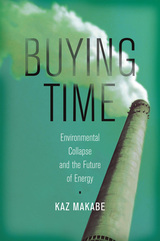
Buying Time
Environmental Collapse and the Future of Energy
Kaz Makabe
University Press of New England, 2017
WE KNOW, from repeated failures to predict and prevent catastrophes ranging from the Great Tohoku Earthquake to the global financial crisis of 2008, that complex adaptive systems, such as those found in nature or in economies, are actually very hard to predict, much less influence. Today, we face environmental degradation caused in large part by the use of fossil fuels, ever-declining efficiencies in extracting them, a pace of development for renewable energy insufficient for replacement of the fossil fuels we are burning through, and population growth that is likely to add two billion people globally by 2045. Despite partial recovery since the financial crisis of 2008, growth remains sluggish, and large budget deficits persist across much of the developed world. Meanwhile, developing states face their own challenges, stemming from unbalanced growth. Against this backdrop, and in light of the urgent need to pay closer heed to our environment, the last thing the world needs is an energy crisis triggered not merely by recurrent scares over supply, but by more lasting structural changes in our ability to use fossil fuels with reckless abandon. Buying Time applies lessons learned the hard way from the global economic crisis of the past decade, to offer an overview of the state of the environment and our energy future. Grounded in subtle thinking about complex systems, including the economy, energy, and the environment, this book underscores the connections linking them all. Kaz Makabe is a veteran financial systems expert who lived through the Fukushima Daiichi nuclear disaster. He nevertheless concludes that nuclear energy is the bridge than can help us cross over the abyss we face.
[more]

Parks and People
Managing Outdoor Recreation at Acadia National Park
Robert E. Manning
University Press of New England, 2009
Parks and People describes fifteen years of research at Maine’s Acadia National Park, conducted by Robert E. Manning, his colleagues, and students. The book is organized into three parts. Part I addresses indicators and standards of quality for park resources and the visitor experience. Part II describes efforts to monitor indicator variables. Part III outlines and assesses management actions designed to maintain standards of quality. The book concludes with a discussion of the implications of this program of natural and social science research, including a series of principles for outdoor recreation management at Acadia and other parks.
[more]
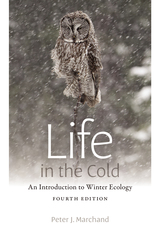
Life in the Cold
An Introduction to Winter Ecology, fourth edition
Peter J. Marchand
University Press of New England, 2014
Peter J. Marchand’s Life in the Cold remains the one book that offers a comprehensive picture of the interactions of plants and animals—including humans—with their cold-weather environment. Focusing on the problems of “winter-active” organisms, Marchand illuminates the many challenges of sustaining life in places that demand extraordinary adaptations. The fourth edition of this classic text includes a new chapter on climate change and its effects on plants and animals wintering in the North.
[more]

Archyology
The Long Lost Tales of Archy and Mehitabel
Don Marquis
University Press of New England, 2009
America’s beloved archy and mehitabel finally return in these entrancing uncollected stories.
[more]
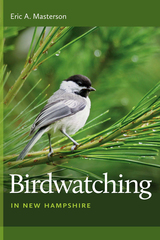
Birdwatching in New Hampshire
Eric A. Masterson
University Press of New England, 2013
Designed to appeal to expert and backyard birdwatchers alike, this comprehensive guide reveals where, when, and how to watch and enjoy birds in New Hampshire. It not only offers the latest information about the seasonal status and distribution of birds in New Hampshire but also features a thorough introduction to the art and practice of birdwatching, including equipment, ethics, migration, conservation, and most of all, finding that “good bird.” The heart of the book is the detailed descriptions and maps that outline more than 120 birding sites across the state, from the Connecticut River Valley to Jeffreys Ledge and Cashes Ledge far off the coast. Drawing upon his extensive knowledge of the habits and habitats of New Hampshire birds, the author has divided the state into six regions, each with a rich diversity of birdwatching destinations. The guide also features informative accounts of the more than 300 bird species regularly seen in the Granite State, including their preferred habitats and graphs illustrating when each is most likely to be encountered. In addition, Masterson also provides a useful guide to rare and accidental bird sightings. The essential guide to birdwatching in New Hampshire for beginners and accomplished regional birders.
[more]
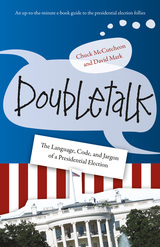
Doubletalk
The Language, Code, and Jargon of a Presidential Election
Chuck McCutcheon
University Press of New England, 2016
The only time most Americans care anything about politics is during the presidential election cycle. This quadrennial flood of posturing and blame, once confined to the July conventions and the November election, has spread like a greasy lake across the landscape and calendar of our politics. From the first exploratory rumblings of the hopefuls sometime after the midterm elections to the tsunami of Super Tuesday, the political language of the presidential election has become a reflecting pool of our polity. Doubletalk casts a warm ray of sunlight on the campaign trail as an add-on to last year’s Dog Whistles, Walk-backs, and Washington Handshakes, with over 100 new terms, phrases, and epithets combining wit, humor, truth, and dubious taste and propriety.
[more]
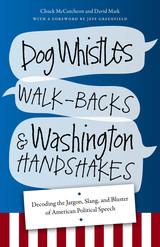
Dog Whistles, Walk-Backs, and Washington Handshakes
Decoding the Jargon, Slang, and Bluster of American Political Speech
Chuck McCutcheon
University Press of New England, 2014
To the amusement of the pundits and the regret of the electorate, our modern political jargon has become even more brazenly two-faced and obfuscatory than ever. Where once we had Muckrakers, now we have Bed-Wetters. Where Blue Dogs once slept peaceably in the sun, Attack Dogs now roam the land. During election season—a near constant these days—the coded rhetoric of candidates and their spin doctors, and the deliberately meaningless but toxic semiotics of the wing nuts and backbenchers, reach near-Orwellian levels of self-satisfaction, vitriol, and deceit. The average NPR or talk radio listener, MSNBC or Fox News viewer, or blameless New York Times or Wall Street Journal reader is likely to be perplexed, nonplussed, and lulled into a state of apathetic resignation and civic somnolence by the rapid-fire incomprehensibility of political pronouncement and commentary—which is, frankly, putting us exactly where the pundits want us. Dog Whistles, Walk-Backs, and Washington Handshakes is a tonic and a corrective. It is a reference and field guide to the language of politics by two veteran observers that not only defines terms and phrases but also explains their history and etymology, describes who uses them against whom, and why, and reveals the most telling, infamous, amusing, and shocking examples of their recent use. It is a handbook of lexicography for the Wonkette and This Town generation, a sleeker, more modern Safire’s Political Dictionary, and a concise, pointed, bipartisan guide to the lies, obfuscations, and helical constructions of modern American political language, as practiced by real-life versions of the characters on House of Cards.
[more]
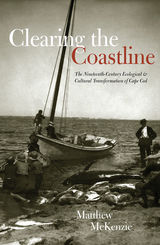
Clearing the Coastline
The Nineteenth-Century Ecological & Cultural Transformations of Cape Cod
Matthew McKenzie
University Press of New England, 2011
In just over a century Cape Cod was transformed from barren agricultural wasteland to bountiful fishery to pastoral postcard wilderness suitable for the tourist trade. This complex social, ecological, and scientific transformation fundamentally altered how Cape Codders used and managed their local marine resources, and determined how they eventually lost them. The Cape Cod story takes the usual land-use progression—from pristine wilderness to exploitation of resources to barren wasteland—and turns it on its head. Clearing the Coastline shows how fishermen abandoned colonial traditions of small-scale fisheries management, and how ecological, cultural, and scientific changes, as well as commercial pressures, eroded established, local conservation regimes. Without these protections, small fish and small fishermen alike were cleared from Cape Cod’s coastal margins to make room for new people, whose reinvention of the Cape as a pastoral “wilderness” allowed them to overlook the social and ecological dislocation that came before.
[more]
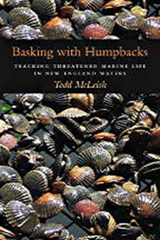
Basking with Humpbacks
Tracking Threatened Marine Life in New England Waters
Todd McLeish
University Press of New England, 2016
Basking with Humpbacks offers an exciting, close-up look at some of the most rare marine creatures living in New England waters and examines the complex threats they face. In eleven chapters, each featuring a different animal or plant, McLeish takes readers on an entertaining journey with scientists who study these species. The author follows basking sharks—the second largest fish in the sea—in their hunt for food, helps harbor porpoises escape from fishing nets, snorkels in search of wild bay scallops, and learns how the blood of horseshoe crabs is used in medical research. Along the way he visits the islands where rare seabirds nest, tracks humpback whales on their long migration to the Gulf of Maine, and watches as stranded leatherback turtles are returned to the ocean. These first-person experiences are coupled with interviews with biologists and other experts who explain in their own words the important role these creatures play in the marine ecosystem and what steps must be taken to protect them. In examining the natural history of selected plants and animals, McLeish also discusses the physics of waves and currents, the geology of the seabed, the chemistry of sea water, and other natural factors that influence the survival of New England marine life.
[more]
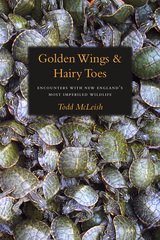
Golden Wings & Hairy Toes
Encounters with New England’s Most Imperiled Wildlife
Todd McLeish
University Press of New England, 2009
This book profiles fourteen of New England’s most rare and endangered flora and fauna—mammals, birds, insects, plants, and fish—by following the biologists who are researching, monitoring, and protecting them. Each chapter includes a first-person account of the author’s experience with these experts, as well as details about the species’ life history, threats, and conservation strategies. McLeish traps bats in Vermont and lynx in Maine, gets attacked by marauding birds in Massachusetts, and observes the metamorphosis of dragonflies in Rhode Island. He visits historical cemeteries to see New England’s rarest plant, tracks sturgeon in the Connecticut River, and observes a parade of what may be the rarest mammal on earth, the North Atlantic right whale, in Cape Cod Bay. The book’s title comes from the name of one of the birds in the book, the golden-winged warbler, and the unusual characteristic used to distinguish the rare Indiana bat from its common cousins, its hairy toes. McLeish, a longtime wildlife advocate and essayist, has a gift for communicating scientific information in an interesting and accessible way. His goal in this book—to make an emotional connection to a variety of fascinating animals and plants—is successfully conveyed to the reader, who comes away amazed by the complexity of individual species and the ecosystems necessary for their survival. Sometimes there are surprises: how lynx benefit from the clear cutting of forests or how utility companies —often blamed for environmental degradation—have accidentally succeeded in creating excellent habitat for golden-winged warblers along their power line corridors. Such examples support McLeish’s assertion that we can meet the immense challenges to species preservation, such as global warming, acid rain, and mercury poisoning, as well as the difficulty of adding new species to the 1973 Endangered Species Act. As McLeish’s book shows, each rare species has an important story to tell about the causes of its population decline, the obstacles each face in rebuilding a sustainable population, and the people who go to extraordinary lengths to give these species a chance to thrive.
[more]

Maximum Harm
The Tsarnaev Brothers, the FBI, and the Road to the Marathon Bombing
Michele R. McPhee
University Press of New England, 2017
In Maximum Harm, veteran investigative journalist Michele R. McPhee unravels the complex story behind the public facts of the Boston Marathon bombing. She examines the bombers’ roots in Dagestan and Chechnya, their struggle to assimilate in America, and their growing hatred of the United States—a deepening antagonism that would prompt federal prosecutors to dub Dzhokhar Tsarnaev “America's worst nightmare.” The difficulties faced by the Tsarnaev family of Cambridge, Massachusetts, are part of the public record. Circumstances less widely known are the FBI’s recruitment of the older brother, Tamerlan Tsarnaev, as a “mosque crawler” to inform on radical separatists here and in Chechnya; the tracking down and killing of radical Islamic separatists during the six months he spent in Russia—travel that raised eyebrows, since he was on several terrorist watchlists; the FBI’s botched deals and broken promises with regard to his immigration; and the disenchantment, rage, and growing radicalization of Tamerlan and Dzhokhar, along with their mother, sisters, and Tamerlan’s wife, Katherine. Maximum Harm is also a compelling examination of the Tsarnaev brothers’ movements in the days leading up to the Boston Marathon bombing on April 15, 2013, the subsequent investigation, the Tsarnaevs’ murder of MIT police officer Sean Collier, the high-speed chase and shootout that killed Tamerlan, and the manhunt in which the authorities finally captured Dzhokhar, hiding in a Watertown backyard. McPhee untangles the many threads of circumstance, coincidence, collusion, motive, and opportunity that resulted in the deadliest attack on the city of Boston to date.
[more]
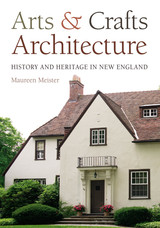
Arts and Crafts Architecture
History and Heritage in New England
Maureen Meister
University Press of New England, 2014
This book offers the first full-scale examination of the architecture associated with the Arts and Crafts movement that spread throughout New England at the turn of the twentieth century. Although interest in the Arts and Crafts movement has grown since the 1970s, the literature on New England has focused on craft production. Meister traces the history of the movement from its origins in mid-nineteenth-century England to its arrival in the United States and describes how Boston architects including H. H. Richardson embraced its tenets in the 1870s and 1880s. She then turns to the next generation of designers, examining buildings by twelve of the region’s most prominent architects, eleven men and a woman, who assumed leadership roles in the Society of Arts and Crafts, founded in Boston in 1897. Among them are Ralph Adams Cram, Lois Lilley Howe, Charles Maginnis, and H. Langford Warren. They promoted designs based on historical precedent and the region’s heritage while encouraging well-executed ornament. Meister also discusses revered cultural personalities who influenced the architects, notably Ralph Waldo Emerson and art historian Charles Eliot Norton, as well as contemporaries who shared their concerns, such as Louis Brandeis. Conservative though the architects were in the styles they favored, they also were forward-looking, blending Arts and Crafts values with Progressive Era idealism. Open to new materials and building types, they made lasting contributions, with many of their designs now landmarks honored in cities and towns across New England.
[more]

The Philosophy of Franz Rosenzweig
Paul Mendes-Flohr
University Press of New England, 2002
Eleven essays on the life and thought of the Jewish philosopher and theologian Franz Rosenzweig.
[more]
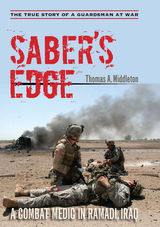
Saber’s Edge
A Combat Medic in Ramadi, Iraq
Thomas A. Middleton
University Press of New England, 2010
The National Guardsman, the citizen soldier called upon to fight for this nation in a time of war, is one of the least understood — and perhaps one of the most compelling — figures of the Iraq War. Saber’s Edge is the story of a middle-aged Vermont firefighter called upon to be a soldier in the worst place on earth — Ramadi, Iraq. In a few short weeks Thomas A. Middleton went from being a suburban dad to a combat medic traveling between platoons, filling in for other medics and engaging in some of the fiercest and most crucial fighting of the war. This is the war as experienced from the ground level: days of tedium interspersed with the adrenalin of combat; moments of lighthearted laughter broken by the sorrow of loss. This is also the story of the unique wartime perspective of our guardsmen. Unlike the raw, unformed young recruit, the mature guardsman often comes with the burdens of family, experience, and a developed sense of self. Accordingly, Sgt. Middleton’s story chronicles the inner conflict created by his long-time professional role as a healer and his newfound life as a warrior in the urban battlefields of Iraq. Thrust into a culture and theater of war that he is little equipped or trained for, the author tries to make sense of his actions. Coarsened by combat and increasingly disdainful of the local population, he receives solace and insight from his life-long faith and ultimately emerges as a man who understands his role in the world. Saber’s Edge is also the story of the Green Mountain Boys of Task Force Saber: a story of comradeship and communion amid fierce street fighting in a crucial theater of the Iraq War (the eventual site of the “Al Anbar Awakening”). Based on the author’s first-hand experiences and interviews with other soldiers, Saber’s Edge presents a riveting account of modern urban warfare and the inspiring story of one man reconciling his actions in warfare.
[more]
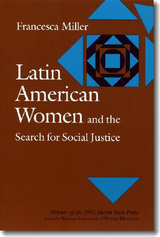
Latin American Women and the Search for Social Justice
Francesca Miller
University Press of New England, 1991
A clear and detailed study of Latin American women’s history from the late nineteenth century to the present.
[more]
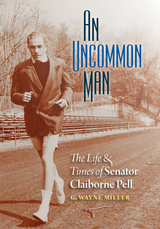
An Uncommon Man
The Life and Times of Senator Claiborne Pell
G. Wayne Miller
University Press of New England, 2011
Claiborne Pell (1918–2009) was Rhode Island’s longest serving U.S. senator, with six consecutive terms from 1961 to 1997. A liberal Democrat, Pell is best known as the sponsor of the Pell Grants. He was also the force behind the creation of the National Endowment for the Arts and the National Endowment for the Humanities, and a visionary in high-speed rail transportation and other areas. An early environmentalist and opponent of the Vietnam War, Pell left his mark on several treaties and peace initiatives. Born into the wealthy family that settled the Bronx, New York, Pell married Nuala O’Donnell, an heiress to the A&P fortune. He lived on the waterfront in exclusive Newport, Rhode Island, yet was a favorite of blue-collar voters. Frugal and quirky, he believed in ESP and UFOs, and was often seen jogging in a sports coat and shorts. Both his hard work and his personality left an indelible mark on this small but influential state—and on America. This lively biography was written with the cooperation of the senator’s family, and with exclusive access to family records and the extensive archives at the University of Rhode Island.
[more]
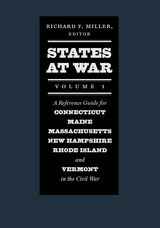
States at War, Volume 1
A Reference Guide for Connecticut, Maine, Massachusetts, New Hampshire, Rhode Island, and Vermont in the Civil War
Richard F. Miller
University Press of New England, 2013
While many Civil War reference books exist, there is no single compendium that contains important details about the combatant states (and territories) that Civil War researchers can readily access for their work. People looking for information about the organization, activities, economies, demographics, and prominent personalities of Civil War states and state governments must assemble data from a variety of sources, and many key sources remain unavailable online. This volume, the first of six, provides a crucial reference book for Civil War scholars and historians, professional or amateur, seeking information about individual states or groups of states. Its principal sources include the Official Records, state adjutant-general reports, legislative journals, state and federal legislation, federal and state executive speeches and proclamations, and the general and special orders issued by the military authorities of both governments. Designed and organized for easy use, this book can be read in two ways: by individual state, with each chapter offering a stand-alone skeletal history of an individual state’s war years, or across states, comparing reactions to the same event or solutions to the same problems.
[more]

States at War, Volume 2
A Reference Guide for New York in the Civil War
Richard F. Miller
University Press of New England, 2014
While many Civil War reference books exist, there is no single compendium that contains important details about the combatant states (and territories) that Civil War researchers can readily access for their work. People looking for information about the organizations, activities, economies, demographics, and prominent personalities of Civil War states and state governments must assemble data from a variety of sources, with many key sources remaining unavailable online. This volume provides a crucial reference book for Civil War scholars and historians, professional or amateur, seeking information about New York during the war. Its principal sources include the Official Records, state adjutant general reports, legislative journals, state and federal legislation, executive speeches and proclamations on the federal and state levels, and the general and special orders issued by the military authorities of both governments, North and South. Designed and organized for easy use, this book can be read in two ways: by individual state, with each chapter offering a stand-alone history of an individual state’s war years; or across states, comparing reactions to the same event or solutions to the same problems.
[more]
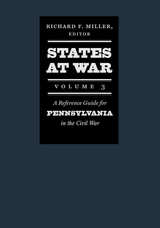
States at War, Volume 3
A Reference Guide for Pennsylvania in the Civil War
Richard F. Miller
University Press of New England, 2014
While many Civil War reference books exist, there is no single compendium that contains important details about the combatant states (and territories) that Civil War researchers can readily access for their work. People looking for information about the organizations, activities, economies, demographics, and prominent personalities of Civil War states and state governments must assemble data from a variety of sources, with many key sources remaining unavailable online. This volume provides a crucial reference book for Civil War scholars and historians, professional or amateur, seeking information about Pennsylvania during the war. Its principal sources include the Official Records, state adjutant general reports, legislative journals, state and federal legislation, executive speeches and proclamations on the federal and state levels, and the general and special orders issued by the military authorities of both governments, North and South. Designed and organized for easy use, this book can be read in two ways: by individual state, with each chapter offering a stand-alone history of an individual state’s war years; or across states, comparing reactions to the same event or solutions to the same problems.
[more]

States at War, Volume 4
A Reference Guide for Delaware, Maryland, and New Jersey in the Civil War
Richard F. Miller
University Press of New England, 2015
While many Civil War reference books exist, there is no single compendium that contains important details about the combatant states (and territories) that Civil War researchers can readily access for their work. People looking for information about the organizations, activities, economies, demographics, and prominent personalities of Civil War States and state governments must assemble data from a variety of sources, with many key sources remaining unavailable online. This crucial reference book, the fourth in the States at War series, provides vital information on the organization, activities, economies, demographics, and prominent personalities of Delaware, Maryland, and New Jersey during the Civil War. Its principal sources include the Official Records, state adjutant-general reports, legislative journals, state and federal legislation, federal and state executive speeches and proclamations, and the general and special orders issued by the military authorities of both governments, North and South. Designed and organized for easy use by professional historians and amateurs, this book can be read in two ways: by individual state, with each chapter offering a stand-alone history of an individual state’s war years; or across states, comparing reactions to the same event or solutions to the same problems.
[more]

States at War, Volume 5
A Reference Guide for Ohio in the Civil War
Richard F. Miller
University Press of New England, 2015
While many Civil War reference books exist, there is no single compendium that contains important details about the combatant states (and territories) that Civil War researchers can readily access for their work. People looking for information about the organizations, activities, economies, demographics, and prominent personalities of Civil War States and state governments must assemble data from a variety of sources, with many key sources remaining unavailable online. This crucial reference book, the fifth in the States at War series, provides vital information on the organization, activities, economies, demographics, and prominent personalities of Ohio during the Civil War. Its principal sources include the Official Records, state adjutant-general reports, legislative journals, state and federal legislation, federal and state executive speeches and proclamations, and the general and special orders issued by the military authorities of both governments, North and South. Designed and organized for easy use by professional historians and amateurs, this book can be read in two ways: by individual state, with each chapter offering a stand-alone history of an individual state’s war years; or across states, comparing reactions to the same event or solutions to the same problems.
[more]
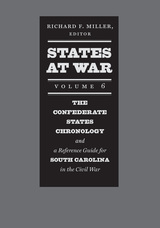
States at War, Volume 6
The Confederate States Chronology and a Reference Guide for South Carolina in the Civil War
Richard F. Miller
University Press of New England, 2018
Although many Civil War reference books exist, Civil War researchers have until now had no single compendium to consult on important details about the combatant states (and territories). This crucial reference work, the sixth in the States at War series, provides vital information on the organization, activities, economies, demographics, and laws of Civil War South Carolina. This volume also includes the Confederate States Chronology. Miller enlists multiple sources, including the statutes, Journals of Congress, departmental reports, general orders from Richmond and state legislatures, and others, to illustrate the rise and fall of the Confederacy. In chronological order, he presents the national laws intended to harness its manpower and resources for war, the harsh realities of foreign diplomacy, the blockade, and the costs of states’ rights governance, along with mounting dissent; the effects of massive debt financing, inflation, and loss of credit; and a growing raggedness within the ranks of its army. The chronology provides a factual framework for one of history’s greatest ironies: in the end, the war to preserve slavery could not be won while 35 percent of the population was enslaved.
[more]
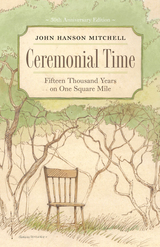
Ceremonial Time
Fifteen Thousand Years on One Square Mile
John Hanson Mitchell
University Press of New England, 2013
“Ceremonial time” occurs when past, present, and future can be perceived simultaneously. Experienced only rarely, usually during ritual dance, this escape from linear time is the vehicle for John Mitchell’s extraordinary writing. In this, his most magical book, he traces the life of a single square mile in New England, from the last ice age through years of human history, including bear shamans, colonists, witches, local farmers, and encroaching industrial “parks.”
[more]

Living at the End of Time
Two Years in a Tiny House
John Hanson Mitchell
University Press of New England, 2014
In this second book in his Scratch Flat Chronicles, John Hanson Mitchell tells how he set out to recreate Henry David Thoreau’s two years at Walden Pond in a replica of Thoreau’s cabin. Mitchell lived off the grid, without running water or electricity, in a tiny house not half a mile from a major highway and in the shadow of a massive new computer company. Nevertheless, his contact with wildlife, the changing seasons, and the natural world equaled and even surpassed Thoreau’s. Hugely popular with the international community of Thoreau followers when it was first published, this book will now be essential reading for the growing community of people who are interested in living in a tiny house, fully experiencing the natural world, or finding self-sufficiency in an increasingly plugged-in society.
[more]
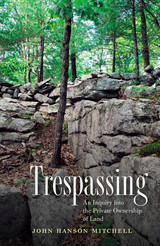
Trespassing
An Inquiry into the Private Ownership of Land
John Hanson Mitchell
University Press of New England, 2015
Trespassing, “a thoughtful, beautifully written addition to environmental and regional literature” (Kirkus Reviews), is a historical survey of the evolution of private ownership of land, concentrating on the various land uses of a 500-acre tract of land over a 350-year period. What began as wild land controlled periodically by various Native American tribes became British crown land after 1654, then private property under US law, and finally common land again in the late twentieth century. Mitchell considers every aspect of the important issue of land ownership and explores how our attitudes toward land have changed over the centuries.
[more]
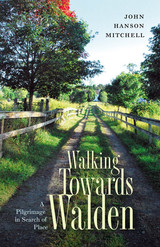
Walking Towards Walden
A Pilgrimage in Search of Place
John Hanson Mitchell
University Press of New England, 2015
Walking Towards Walden is an exploration of the sense of place, what it means, how it developed, and why it matters. Based on an eighteenth-century literary device in which a group of friends undertake a walking tour and discuss a certain subject, this wide-ranging story emerges from the author’s fifteen-mile bushwhack through woods, backyards, and marshes—from a hilltop in Westford, Massachusetts, to the town of Concord, Massachusetts—trespassing all along the way. A mock epic, complete with encounters with armed mercenaries and vicious dogs, the book covers all the aspects of place—art, literature, myth, and even music.
[more]
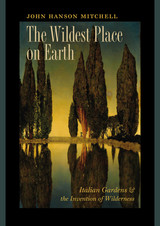
The Wildest Place on Earth
Italian Gardens and the Invention of Wilderness
John Hanson Mitchell
University Press of New England, 2015
This is the ironic story of how Italian Renaissance and Baroque gardens encouraged the preservation of the American wilderness and ultimately fostered the creation of the world’s first national park system. Told via Mitchell’s sometimes disastrous and humorous travels—from the gardens of southern Italy up through Tuscany and the lake island gardens—the book is filled with history, folklore, myths, and legends of Western Europe, including a detailed history of the labyrinth, a common element in Renaissance gardens. In his attempt to understand the Italian garden in detail, Mitchell set out to create one on his own property—with a labyrinth.
[more]
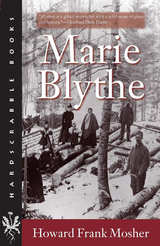
Howard Frank Mosher
University Press of New England
Howard Frank Mosher is one of the best-loved writers of northern New England, one who has “created a literary landscape as textured as anything produced by the U. S. Geological Survey,” according to USA Today. His “greatest gift,” says the Washington Post, is “his talent for creating lively, living characters.” One of his most vivid and memorable characters is Marie Blythe. At the dawn of the twentieth century, a young girl with a felicitous name immigrates to Vermont from French Canada. She grows up confronting the grim realities of life with an indomitable spirit—nursing victims of a tuberculosis epidemic, enduring a miscarriage alone in the wilderness, and coping with the uncertainties of love. In Marie Blythe, Mosher has created a strong-minded, passionate, and truly memorable heroine.
[more]
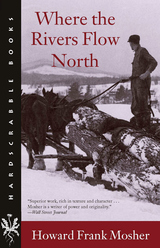
Howard Frank Mosher
University Press of New England
The stories of Where the Rivers Flow North are “superior work, rich in texture and character,” says the Wall Street Journal; “the novella is brilliantly done.” That novella, the title story of the collection, was also made into a feature film starring Rip Torn and Michael J. Fox. These six stories, available again in this new edition, continue Mosher’s career-long exploration of Kingdom County, Vermont. “Within the borders of his fictional kingdom,” the Providence Journal has noted, “Mosher has created mountains and rivers, timber forests and crossroads villages, history and language. And he has peopled the landscape with some of the truest, most memorable characters in contemporary literature.”
[more]
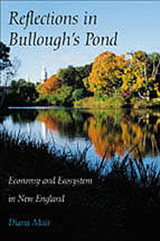
Reflections in Bullough’s Pond
Economy and Ecosystem in New England
Diana Muir
University Press of New England, 2002
From the vantage point of a nearby pond in Newton, Massachusetts, Diana Muir reconstructs an intriguing interpretation of New England's natural history and the people who have lived there since pre-Columbian times. Taking a radically new way to illustrate for general readers the vast interrelationships between natural ecology and human economics, Muir weaves together an imaginative and dramatic account of the changes, massive and subtle, that successive generations of humankind and such animals as sheep and beavers have worked on the land. Her compelling narrative takes us to a New England populated by individuals struggling to make a living from a land not generously endowed by nature. Yankee history, she argues, was a string of ecological crises from which the only escape lay in creating radical new solutions to apparently insurmountable problems. Young men and women coming of age in the 1790s faced a bleak future. In a time when farming was virtually the only occupation, a burgeoning population meant that there was not enough land to go around. Worse, such land as there was had been worn out by generations of careless use. With no prospects and no options, young men like Eli Whitney and Thomas Blanchard might have resigned themselves to a life of poverty. Instead, they started an industrial revolution, the power of which astonished the world. Reflections in Bullough's Pond is history on a grand scale. Drawing on scholarship in fields ranging from archaeology to zoology, Muir offers an exhilarating tour of Paleolithic megafauna, the population crisis faced by New England natives in the pre-Columbian period, the introduction of indoor plumbing, and the invention of the shoe-peg. At the end, we understand ourselves and our world a little better.
[more]
READERS
Browse our collection.
PUBLISHERS
See BiblioVault's publisher services.
STUDENT SERVICES
Files for college accessibility offices.
UChicago Accessibility Resources
home | accessibility | search | about | contact us
BiblioVault ® 2001 - 2024
The University of Chicago Press









